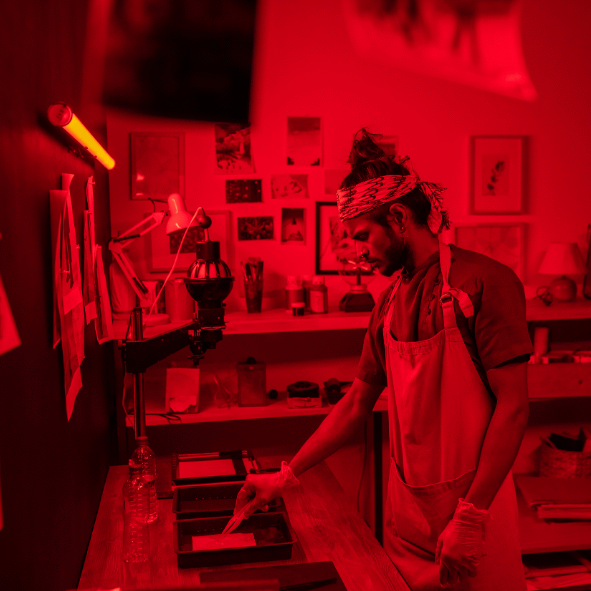
.png)
In Focus: Culture
The North-West Region views culture as a driver of sustainable development. The regional strategy leverages cultural heritage and supports cultural and creative industries as emerging economic sectors. The goal is to build a strong cultural ecosystem that fosters local identity, social cohesion, and economic competitiveness—both in urban and rural areas. The region supports both built heritage and contemporary artistic expression. Collaboration is encouraged between public authorities, creatives, and the private sector to develop innovative cultural products and services. The focus is on inclusion, access to culture, and integrating culture into urban and tourism development.
Heritage restoration and conservation – Castles, wooden churches of Maramureș, and other heritage sites require restoration and rehabilitation to preserve their historical value.
Cultural and experiential tourism – Cultural routes (memorial houses, traditional villages), festivals (Electric Castle, TIFF), and folk events drive investment in guided tours, interactive museums, and traditional accommodation facilities.
Creative industries and visual arts – Animation, film, and digital arts (film studios, art festivals) receive support through the EU’s “Creative Europe” programme; Cluj-Napoca is already an IT hub collaborating with the media sector.
Traditional crafts and artisan work – Carpet weaving, ceramics, woodworking, and handwoven textiles with regional identity can be scaled through workshops supported by local rural development programs.
Local gastronomy and wine – Promoting local cuisine (dairy products, traditional dishes) and modernizing regional vineyards attract tourists and investment in themed restaurants, backed by cultural and tourism promotion grants.
Digital culture and intangible heritage – Digitizing museum collections and archives (virtual reality for landmarks, 3D exhibitions), along with support for local dance, music, and customs, align with global trends in the digital preservation of culture.
Art education and training – Alongside traditional forms of education (art schools, universities), there is growing interest in private educational programs for both children and adults across all artistic disciplines.
Events and festivals – Investments in cultural event infrastructure (open-air amphitheaters, mobile stages) enhance the region’s festival potential (music, film, art fairs) and attract EU funding for local development.
Theatre and film – Supporting local cinemas with modern equipment (sound systems, set design) enables in-house productions and hosting of European-recognized film festivals. The region also holds strong potential for film locations and developing production houses.
Visual arts and design – Art galleries, fashion design studios, and contemporary ceramics can access cultural funding for exhibitions and expanding into international art markets.
Literature and publishing – Local publishers and cultural magazines can scale up through funding for translations and educational projects, including support from the Romanian Cultural Fund (AFCN).

Innovation and entrepreneurship
Cluj-Napoca has become a creative hub, with projects that integrate art and technology. CREIC, CRESC Oradea, and other incubators support cultural startups. Creative industries such as design, media, gaming, and architecture attract young entrepreneurs and foster cultural exports. The region hosts active creative clusters like Creative Transylvania and initiatives focused on the digitalization of heritage and museums. Major festivals such as TIFF and Jazz in the Park serve as platforms for testing innovative cultural solutions. Digital culture and the creative economy are key priorities.

Companies
In 2023, the North-West Region had over 7,000 cultural and creative companies, with the majority located in Cluj and Bihor. Most of these are micro-enterprises or sole proprietorships active in design, media, crafts, and creative IT. The sector is fragmented but dynamic and growing. The most developed fields are advertising, creative software, and design, followed by visual arts, publishing, and music. Traditional sectors coexist with emerging industries, creating a diverse ecosystem. Creative exports are on the rise, and new companies are seeking international markets.

Workforce
Over 20,000 people work in the cultural and creative industries in the region, with the majority located in Cluj and Oradea. The workforce is young and skilled, but fragmented between freelancers and employees in public institutions. Precarity remains a major challenge. Women are well-represented, especially in libraries, museums, and visual arts. Freelancing dominates in design, photography, and music. Many smaller towns suffer from a lack of qualified cultural personnel, and staff turnover affects the continuity of projects.

Average Wage
Salaries in the sector vary significantly: in creative IT or media, they can exceed 8,000 lei net, while in museums or cultural centers they remain around 3,000 lei. Freelancers and independent artists have irregular incomes and rarely have access to social protection. Working conditions are often difficult, with outdated equipment and inadequate spaces, especially in rural areas. EU projects have brought improvements through modernization of venues, equipment, and training. There is a slow but noticeable progress towards professionalization and salary equity.

Education
Universities in Cluj, Oradea, and Baia Mare train professionals in theater, arts, music, design, and cultural management. Art high schools and folk schools contribute to foundational training and the transmission of intangible heritage. Alternative training is becoming increasingly popular: workshops, online courses, and artistic residencies. Erasmus programs and FormareCulturala.ro provide European experiences and professionalization. The educational ecosystem is well-developed and meets the needs of the sector.

R&D
The regional ICC analysis (2019) conducted by ADR NV provided a clear picture of the cultural sector. Universities in Cluj contribute through applied research in cultural policies, heritage, and creative industries. International projects such as Culture Next and ECoC-S Monitoring involve local stakeholders in research on the impact of culture. Regional cultural observer initiatives are taking shape. Data is becoming essential for evidence-based policies.

Challenges
Reduced funding, unequal distribution of resources, and outdated infrastructure limit cultural development. The lack of up-to-date data and coherent strategies affects decision-making and the prioritization of interventions. Limited mobility, weak promotion, and a lack of cultural spaces in neighborhoods or rural areas isolate the public. The skilled human resource is unstable. The sector needs consistent support, partnerships, and cultural leadership.
 OG 51/1998: framework for non-repayable public funding for cultural projects
OG 51/1998: framework for non-repayable public funding for cultural projects
 Law no. 422/2001: Protection of Historical Monuments
Law no. 422/2001: Protection of Historical Monuments
 Law no. 26/2008: Protection of Intangible Cultural Heritage
Law no. 26/2008: Protection of Intangible Cultural Heritage
 Law no. 311/2003: Museums and Collections Regime
Law no. 311/2003: Museums and Collections Regime
 Government Ordinance no. 39/2005: Cinema and the Cinematographic Fund
Government Ordinance no. 39/2005: Cinema and the Cinematographic Fund
 Law no. 8/1996: Copyright Law
Law no. 8/1996: Copyright Law
 Law no. 35/1994: Sponsorship
Law no. 35/1994: Sponsorship
 Government Ordinance no. 21/2007: Operation of Performance Institutions
Government Ordinance no. 21/2007: Operation of Performance Institutions
Government Ordinance no. 51/1998 regulates the legal framework for granting non-repayable public funding for cultural projects in Romania. It sets the principles, procedures, and conditions under which funding authorities, including central and local public administrations, can financially support cultural initiatives. The funding can cover all or part of the expenses needed to implement projects, based on criteria such as artistic excellence, cultural and social impact, and contribution to cultural diversity. Additionally, OG 51/1998 allows for multi-year funding and support for urgent cultural needs, thus strengthening the national cultural infrastructure. The full text of the ordinance can be consulted here: Legislative Portal.
Law no. 422/2001 regulates the protection of historical monuments in Romania, aiming to preserve the national cultural heritage for future generations. It establishes guidelines for the identification, classification, and conservation of historical monuments, as well as the restoration and rehabilitation processes. The law emphasizes the importance of maintaining the integrity and authenticity of these monuments, while also promoting their integration into the cultural and tourist circuits. It also defines the roles and responsibilities of public institutions, private entities, and citizens in safeguarding Romania’s historical monuments.
Law no. 26/2008 establishes the legal framework for the protection and preservation of intangible cultural heritage in Romania. It focuses on safeguarding traditions, customs, rituals, performing arts, craftsmanship, and other cultural expressions that are passed down through generations. The law aims to recognize, document, and promote intangible heritage, ensuring its transmission to future generations. It encourages community involvement and the cooperation of local authorities, cultural institutions, and relevant stakeholders in preserving these valuable elements of national identity.
Law no. 8/1996 regulates copyright protection in Romania, establishing the rights of creators over their intellectual works. It ensures the legal framework for the protection of literary, artistic, and scientific works, granting authors exclusive rights to reproduce, distribute, and publicize their creations. The law also covers the protection of related rights, such as those of performers, producers, and broadcasters. It provides mechanisms for enforcing copyright, including penalties for infringement, and facilitates the transfer of rights through licensing or assignment. This law supports the protection of creative works in various forms, including literature, music, visual arts, software, and cinematography, ensuring fair compensation for creators.
Law no. 35/1994 regulates the legal framework for sponsorship activities in Romania, establishing the conditions under which individuals and companies can provide financial or material support to various activities, including cultural, educational, and sports events. The law allows sponsors to receive tax incentives, making it easier to support public or private initiatives that align with social, cultural, or educational objectives. It also outlines the rights and obligations of both sponsors and beneficiaries, ensuring transparency and accountability in the sponsorship process. Through this legislation, sponsorship serves as an important tool for promoting cultural, social, and community development.
Government Ordinance no. 21/2007 regulates the functioning of performance institutions in Romania, such as theaters, concert halls, and other venues for cultural performances. It sets the legal framework for the organization, management, and operation of these institutions, ensuring they comply with safety, quality, and accessibility standards. The ordinance establishes the conditions under which performances are organized, including requirements for contracts, labor rights, and the protection of artistic works. It also addresses the financial aspects, ensuring that public and private funding supports the sustainability and growth of cultural institutions. Through this ordinance, the state ensures that performance institutions contribute to the cultural development and diversity of the country.


